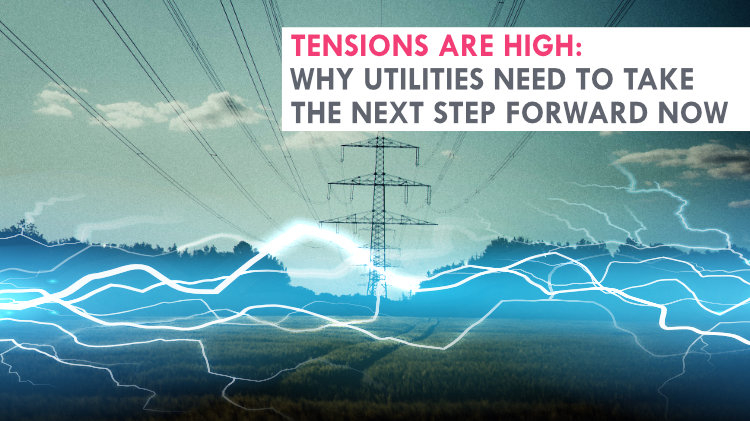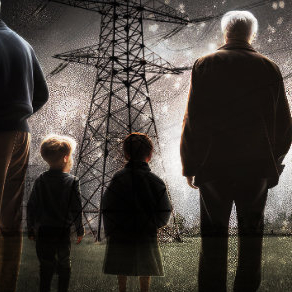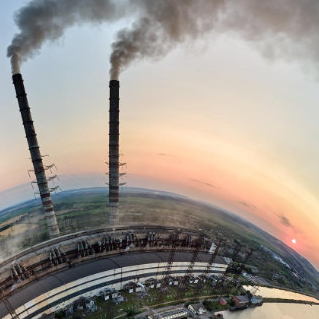
Ever since the introduction of more and more new technologies and corresponding policy changes, the entire energy industry seems to be in constant turmoil. Especially the trend towards a more liberal energy market that favors decentralization and the creation of energy communities will shake up the established generators and retail companies that make up today’s energy industry. How can all these companies adapt to a future-proof business model and tap into new revenue streams? To answer this, we need to explain how well liberalization in the energy industry worked in the past and how this influences market dynamics today.
What exactly is the energy industry? To keep it simple - it is everything that is required to bring energy from a windmill to a light bulb, or from a coal power plant to an electric car battery. This entire value chain of energy used to be in the hand of one regional operator that was typically controlled by the state. These entities generated the electricity in their own power plants, put up an infrastructure of transmission and distribution lines to transport it and then billed end consumers according to their consumption. What sounds like the most simple way of doing things, however, created economic inefficiencies with the supply basically becoming the local monopoly. They also had disincentives to bill fairly, offer good customer service or take into account their environmental impact. The responsible entity acted either delayed, slowly or not at all on these issues. So if this situation was to be improved, the first thing for governments to do was to legally separate the transportation and distribution infrastructure from energy generation, wholesale and retail.
Liberalization makes for greater competition
The liberalization of the energy market that was enacted in the EU (and many other places), now limits the range of operations for network operators by preventing them from generating electricity or selling it to consumers. In most cases, the liberalization of the energy sector was accompanied by unbundling, which enforced a clear distinction between generation, transportation, distribution, wholesale and retail. Since in the past most public utilities fulfilled all of these roles, many of them were divided into two separate legal entities, but in reality, the lines remain blurry: Consumers often still see these companies as one and the same - especially since they tend to keep nearly the same name and the same branding (e.g. Big City Networks and Big City Power). Also, a retailer may still also be a generator, or may obtain power from a third party through wholesale power markets, with only the distribution services now being separated.
Some people doubted that this would bring the desired effect, but, in the end, intense competition helped to improve both the upstream and downstream business sectors and consumers are now able to choose from a bigger number of suppliers (retailers) and from a wider variety of pricing models in most of the EU. Today, this liberalization, which also affected the workings of the gas market, is blamed for the current gas price surges, as it allowed setting prices based on real-time market trading rather than more stable long-term contracts. While this claim has some merit, it can be argued that the cost savings that liberalization provided to end customers up until the price surge basically outweigh the premium we are currently paying. In regards to generating electricity, we also have to factor in that liberalized energy markets are already able to provide flexibility, which is of great value in the process of integrating renewable energy. No doubt, there are still high barriers to entry in the energy industry, but the increasing shift towards renewable energy already puts established companies in distress and creates an even higher grade of competition. One trend that could even pull the rug out from under the established big players, however, is the introduction of decentralized energy resources.
Decentralization and aggregation
Renewable energy sources are not only causing the energy industry to be more environmentally friendly and allow for energy to be generated closer to its consumption. Some consumers are now turning into so-called prosumers, as they are starting to produce their own power and sell it to the grid. Together with local power sources like wind turbines, PV and battery farms and the proper balancing, storage and trading technology they can create energy communities. Trading and transacting most of the energy required within the community, they are able to operate at a high grade of independence from the grid and cross-country power outages. To have more leverage on the market, a so-called aggregator can bundle these distributed energy resources together into a virtual power plant, control them remotely and trade the different assets as a single entity on power markets.
Considering the rising prices for grid electricity and gas, there is a serious argument to be made in favor of locally produced electricity that is by nature renewable. Governments in France, Germany and Austria, among others, are anticipating this trend and offer a wide range of incentives to encourage consumers to make the switch. With end consumers interchanging their energy locally and politics backing this development, let’s see how the established companies will have to adapt in this new world of energy.
The future of utilities
This is how we imagine things turning out for each utility in a decentralized peer-to-peer energy landscape:
Generators
The big power plant operators will have to compete for an ever shrinking market share, despite their undoubtedly crucial role in providing base loads and capacity reserves when the sun is not shining and when the wind is not blowing, and thus competition will increase steadily. The ones that will come up with the best business model to offer the cheapest energy, while providing valuable flexibility will manage to hold on to their market share when the disruption has set in.
Transmission
As the landscape irrevocably shifts, electricity networks face significant challenges. While economies and various segments are leaving behind fossil fuels, the electrification rate is increasing dramatically. There is a steady demand growth for more power (power consumption records all over in Europe are broken every year), while this power is generated in more and more locations (connection points), with smaller and smaller capacities. Radical changes are the only way to seize a new role in the future energy world. Some TSOs are already engaging in disruptive approaches, to explore the opportunities beyond their traditional roles, to understand how Power to X or X to Power technologies could contribute to more resilience and flexibility of their networks to effectively serve the exponential demand growth and the shift to carbon-zero economics.
Distribution
Distribution system operators will need to adapt networks designed for one-way power flow to handle bi-directional flow. The strain on the distribution grid will grow as more and more small-scale generation comes online. The problem is, they still don't know how much prosumers will really produce and what impact it has on their networks. They have access to some technical specifications from the customers’ application process, but as this data is not structured or centralized, it can't be used in simulations or taken into account in network modelling. A single rooftop PV or EV system won't make much difference but when the whole street or village has PV/EV then it can cause problems. Distribution system operators will need to come up with a solution to model impact of prosumers on grid energy flows, in order to identify where grid improvements and further modern substations are required. Relying on market-based commercial mechanisms (e.g.: stepping into the peer-to-peer trading space and providing digital platforms that facilitate energy trading and transacting) might ease the pressure on their networks and reduce the need for physical investment to some extent.
Retail
The future looks really dim for retailers. If consumers that used to rely on grid electricity are going to generate their own energy – and maybe even trade hyper-locally within energy communities – what’s left for the middleman? Energy retail will suffer the same fate as many other retail sectors. Masses of consumers will go off-grid at a community scale, and advances in technology and the demands of an empowered and educated consumer base will only accelerate these developments. Also in countries where most consumers are not yet connected to a central power grid, local initiatives based on microgrids will be the cheaper and more direct alternative and so retailers won’t be able to set foot there either. Retailers need to be quick on their feet and figure out what type of product they want to offer these prosumers. One way would be to buy the produced power & place it in their balancing portfolio with a bi-directional contract, or to offer customers a contract to control the customer’s asset (not to mention new bundled sales approaches, where retailers sell and operate batteries deployed at their clients). Either way there is a need to craft a solution to automate the entire commercial process of optimization and optionally control the asset, as well as balancing and settlement.
Fusing liberalization and decentralization
Oh, how the tables have turned in the energy industry! Where utilities used to provide one directional service and provide network maintenance, their consumers are turning into producers. They are no longer the silent end users, but are also entering the pit with their offerings to take what’s theirs. Utilities have to drastically change their business models, by enabling bidirectional utilization of their networks and embrace new business models for retailers and new market entrants like aggregators, flexibility service providers and energy communities.
The future functions of a distribution network are more diverse and “richer” in services. Energy communities will create “parallel” virtual networks, or subnetworks in the form of microgrids and diverse types of flexibility (balancing/ancillary) services have to be enabled and offered. The utility business domain is transitioning from a “silent take it or leave it” model towards a more democratic, engagement-supportive model, where the end users and new market entrants will play a much more active role.




